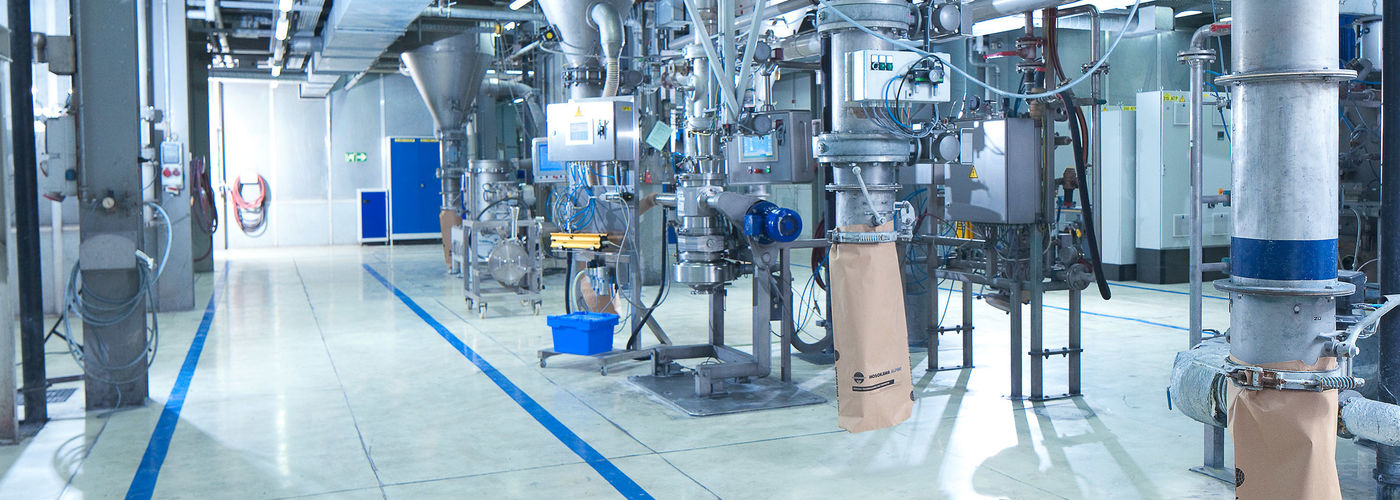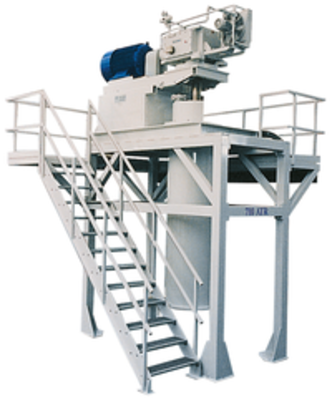- Dry media mill for superfine products with finenesses to approx. 80% <2µm and a high specific surface
- Double-walled mill housing to permit water cooling
- The mill operates in circuit mode with Hosokawa Alpine Turboplex ultrafine classifiers


The vertical agitated media mill comprises a cylindrical grinding chamber that is filled with grinding beads of a few millimetres in diameter. The ratio of grinding beads to product is adjusted such that the spaces between the grinding beads are just filled with product. Because of the small grinding beads, the particle size of the feed material should not exceed 100 µm. The agitator shaft with its arms dips into the bed of material and grinding beads and is set into slow rotation by a gear unit connected to a motor.
The peripheral speed of the agitator arms is about 2.5 – 3 m/s. At such low speeds, the energy introduced by the agitator is transmitted mainly by friction into the bed of material. A discharge screw at the lower end of the mill simultaneously extracts the blend of grinding beads and product. The grinding beads are separated with a screening machine and returned to the mill. Because of the high fineness values produced with the mill, virtually all products have a strong tendency to deposit, and a grinding aid needs to be added.
Typical applications for ATR mills are mineral fillers, glazing raw materials and non-mineral hard materials. Examples: limestone, quartz, zircon sand, talc, ceramic colours and frits, titanium dioxide, etc.